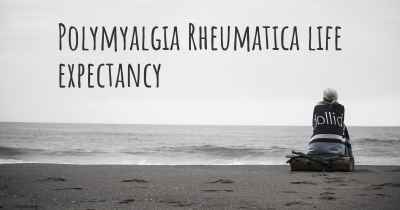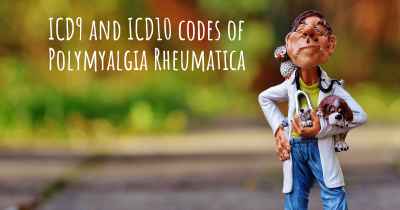What is the history of Polymyalgia Rheumatica?
When was Polymyalgia Rheumatica discovered? What is the story of this discovery? Was it coincidence or not?

Polymyalgia Rheumatica (PMR) is a chronic inflammatory disorder that primarily affects older individuals, typically those over the age of 50. It is characterized by severe muscle pain and stiffness, primarily in the shoulders, neck, and hips. PMR was first recognized as a distinct medical condition in the early 20th century, but its exact cause and pathogenesis remain unclear.
The history of PMR dates back to the early 19th century when physicians began documenting cases of a condition known as "senile rheumatic gout." However, it wasn't until the mid-20th century that PMR was formally described and differentiated from other rheumatic diseases.
In 1957, a British rheumatologist named Dr. Barbara Morris published a landmark paper in the British Medical Journal, where she described a group of patients with a distinct set of symptoms, including severe pain and stiffness in the shoulders and hips. She named this condition "polymyalgia rheumatica," derived from the Greek words "poly" meaning many, "myalgia" meaning muscle pain, and "rheumatica" referring to a rheumatic disorder.
Dr. Morris's publication helped raise awareness about PMR and led to further research into its clinical features and treatment options. Over the years, numerous studies have been conducted to better understand the underlying mechanisms and develop effective management strategies.
While the exact cause of PMR remains unknown, researchers have identified several factors that may contribute to its development. Genetic predisposition is believed to play a role, as certain human leukocyte antigen (HLA) markers have been associated with an increased risk of PMR. Additionally, environmental triggers such as infections have been suggested as potential initiators of the disease process.
One significant breakthrough in the understanding of PMR occurred in the 1990s when researchers discovered a strong association between PMR and another autoimmune condition called giant cell arteritis (GCA). GCA is a systemic vasculitis that primarily affects medium and large arteries, particularly those in the head and neck. The recognition of this association led to a better understanding of the shared pathogenesis and clinical overlap between PMR and GCA.
Diagnosing PMR can be challenging due to its nonspecific symptoms and the absence of specific laboratory tests. However, certain diagnostic criteria have been established to aid clinicians in making an accurate diagnosis. These criteria include the presence of bilateral shoulder pain, morning stiffness lasting more than 45 minutes, elevated markers of inflammation (such as erythrocyte sedimentation rate and C-reactive protein), and a rapid response to low-dose corticosteroid therapy.
Treatment for PMR typically involves the use of corticosteroids, which provide rapid relief of symptoms. However, long-term steroid use can lead to various side effects, making it important to find the lowest effective dose to manage the disease. In recent years, researchers have explored alternative treatment options, including the use of disease-modifying antirheumatic drugs (DMARDs) and biologic agents, to reduce the reliance on corticosteroids.
In conclusion, the history of PMR spans over a century, with significant advancements made in understanding its clinical features, diagnostic criteria, and treatment options. While the exact cause of PMR remains elusive, ongoing research continues to shed light on the underlying mechanisms and potential therapeutic targets. The recognition of PMR as a distinct entity has greatly improved patient care and management, allowing for earlier diagnosis and appropriate treatment.








